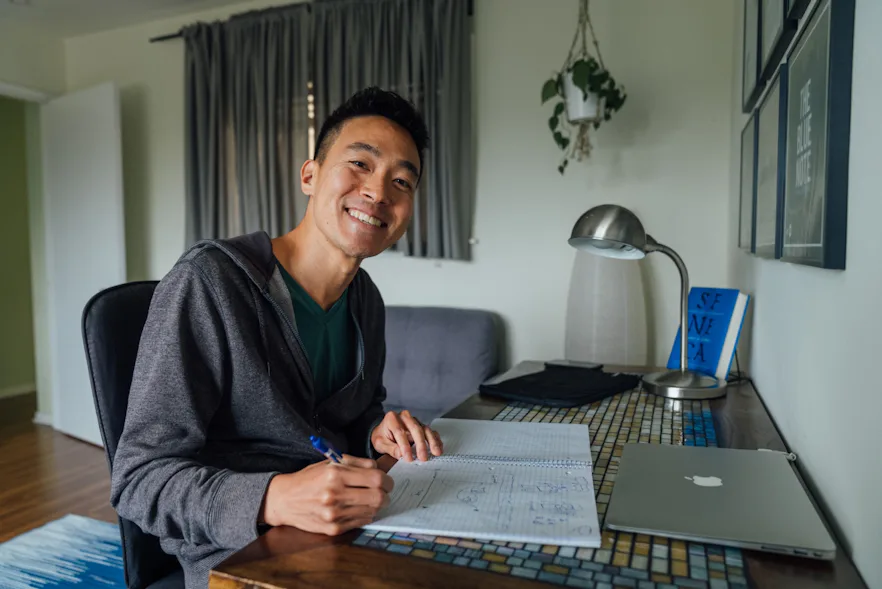Lawrence greets me across a Zoom screen from his studio in Los Angeles and tells me not to be fooled by the clean wooden paneled background; everything I can’t see around him, he says, is a mess.
His wife shares this creative garage space as well, he tells me with a smile, and her ceramic wheel is nearby, among other things.

Lawrence always hoped his life and work would center around creativity, though he never imagined it would happen like this.
As a kid, he was always doodling recurring characters, like the one with the upside-down triangle face, on every piece of paper in front of him. But college is when he first decidedly focused on a particular craft.
It started when a friend noticed he was down one day and bought Lawrence some classes for a music program, hoping it might help lift his spirits.
And it did.
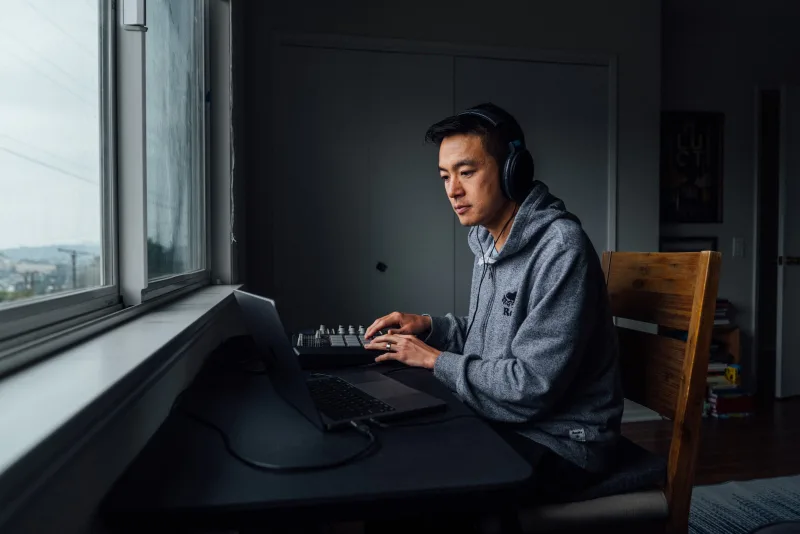
Lawrence had made music before, but this was the first time he realized that, at least for him, creating something made him feel better, and more connected to himself.
He predominantly made beats throughout college and continued to produce them on the side when he got his first job out of college working in finance. Then, after some quick napkin math, as he calls it, he decided to quit his day job after a few years and pursue music full-time.
His beats were selling online, he was in LA, near the industry, and, frankly, as he says, he didn’t have a lot of bills or responsibilities then. He says it wasn’t the most thought-out leap, but it was one he could make with so few strings attached in that season of his life.
It also hadn’t felt like too far of a leap because before Lawrence even began his first job after college, he’d already decided to view his day jobs as a means towards creation and as ways to fund his art—whether by giving him money and time outside his job to create without pressure or giving him the chance to save up money and then take strategic leaps.
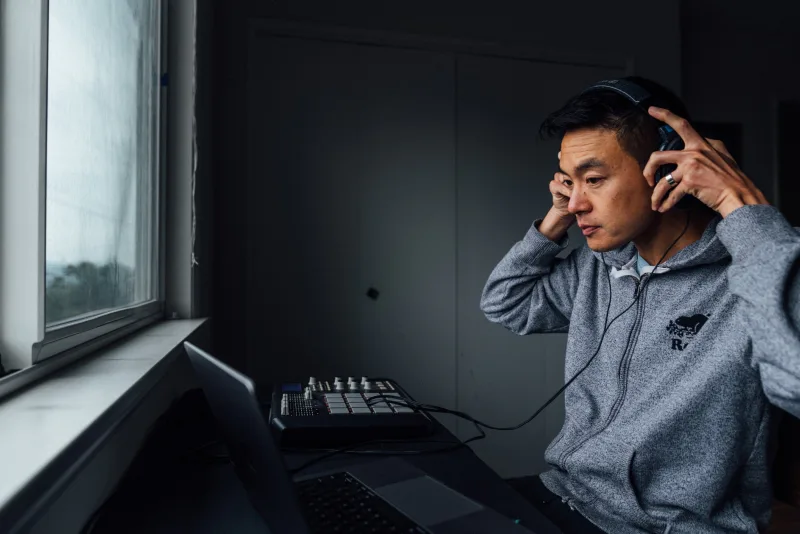
This kind of strategic framing would inspire his creative writing life and posts that would go viral… but that would come later.
For now, Lawrence was all in on music. And, like almost every artistic endeavor, it was full of high highs and low lows. He used most of his savings during that time to get by.
But after a few years of focusing on music, the thing that once brought him so much joy, started to turn him into someone he didn’t recognize.
“Whatever your mode of expression is now, it doesn’t necessarily mean it’s going to be that in perpetuity.”
Lawrence didn’t like who he was becoming. And it wasn’t so much that creating music was changing him in ways he didn’t like, but the music business was turning him into someone he didn’t want to be. He felt weary and desperate, standing outside record labels, trying to network constantly. Music used to be something that lit him up and got him excited. But now, it only left him feeling empty.
After a few years, he decided to step away from making music full-time and got another corporate job.

But, just like his first job out of college, he chose something he thought would still give him the capacity and means to create. He was burnt out on music but not on his creative potential.
So even though Lawrence didn’t know where to direct his creativity and often felt lost, deep down, he knew feeling like this was part of the process.
I always knew that the money I was making there would afford me the freedom and attention to do what I wanna do creatively.
He still didn’t know what he wanted to do creatively next, but he wasn’t worried about that.
I think it’s important for creators to understand that whatever your mode of expression is now, it doesn’t necessarily mean it’s going to be that in perpetuity.
For a time, though, he was just working his corporate job and not creating anything on the side. And, as he puts it, “it did not feel good.”
So when Lawrence heard about people writing on Medium, he remembered how much fun he’d had when he did a music project where he posted a beat and then wrote about what it meant to him.

He decided to start writing on Medium and wrote his first post about his own philosophical musings on the commonalities of science and faith. It was just a place to channel all that pent-up creative energy he had now that he was no longer making music.
He wrote his next piece on how creating was an antidote to feeling lost, at least for him.
A lot of people resonated with that piece, and it was viewed tens of thousands of times.
And where music had begun to make him feel like he was always desperately chasing external validation, writing about ideas felt less about him and more like a way to truly connect with people.
There was something about this avenue of writing where I was able to touch people in a way that my music necessarily couldn’t.
Lawrence is naturally philosophical and often delved deep into philosophical topics and ideas with friends around real and proverbial campfires. He loved deep thinking and the power of reframing, and writing gave him an outlet to share those thoughts more broadly, though he never anticipated how many people were about to join him around this new virtual campfire.

“That’s probably our greatest superpower.”
Lawrence’s posts were becoming popular on Medium, and he was truly surprised. He hadn’t thought anyone would care; he was mostly just writing for himself. Even today, he says his north star is less about how many people view his art and more about how creating art moves him forward as a person.
He kept writing, and his posts centered on living a well-lived life. He never claimed to have all the answers, and his posts weren’t about telling people how to live but rather about sharing a new frame that might help them see an old problem from a new lens.
Lawrence is fascinated by framing and mindset and how there are often multiple ways to see (and react) to the same situations. He’s been interested in this since he was a kid. For example, he says, even though he grew up poor, he never felt poor.
We didn’t have much. But I never felt like we didn’t have much. I always felt everything was abundant.
As he grew up, he became more interested in how his mind could reframe something in a way that reduced suffering and created pathways filled with potential he could’ve never seen otherwise.
We have this keen ability to interpret factual information; that’s probably our greatest superpower, the ability to take a situation and reframe it almost instantaneously if you choose. That means you have to be aware that a choice exists.
My pieces don’t tell you what to do. They’re about asking, how can you think about things a little differently? How can you take what you see as a problem and take another look? And I think that is the key to a well-lived life because a well-lived life doesn’t mean you have no problems.
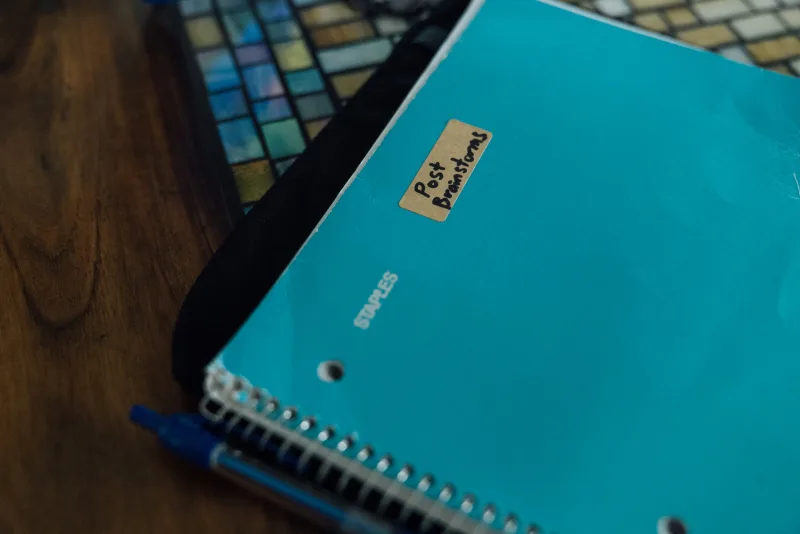
His first official illustrated More To That post was published in March 2018. There was no specific strategy and no grand intention to start a business. It was simply a product of the natural momentum of creating something you love.
He had no idea how viral his work would go or that it would turn him into a professional creator once again.
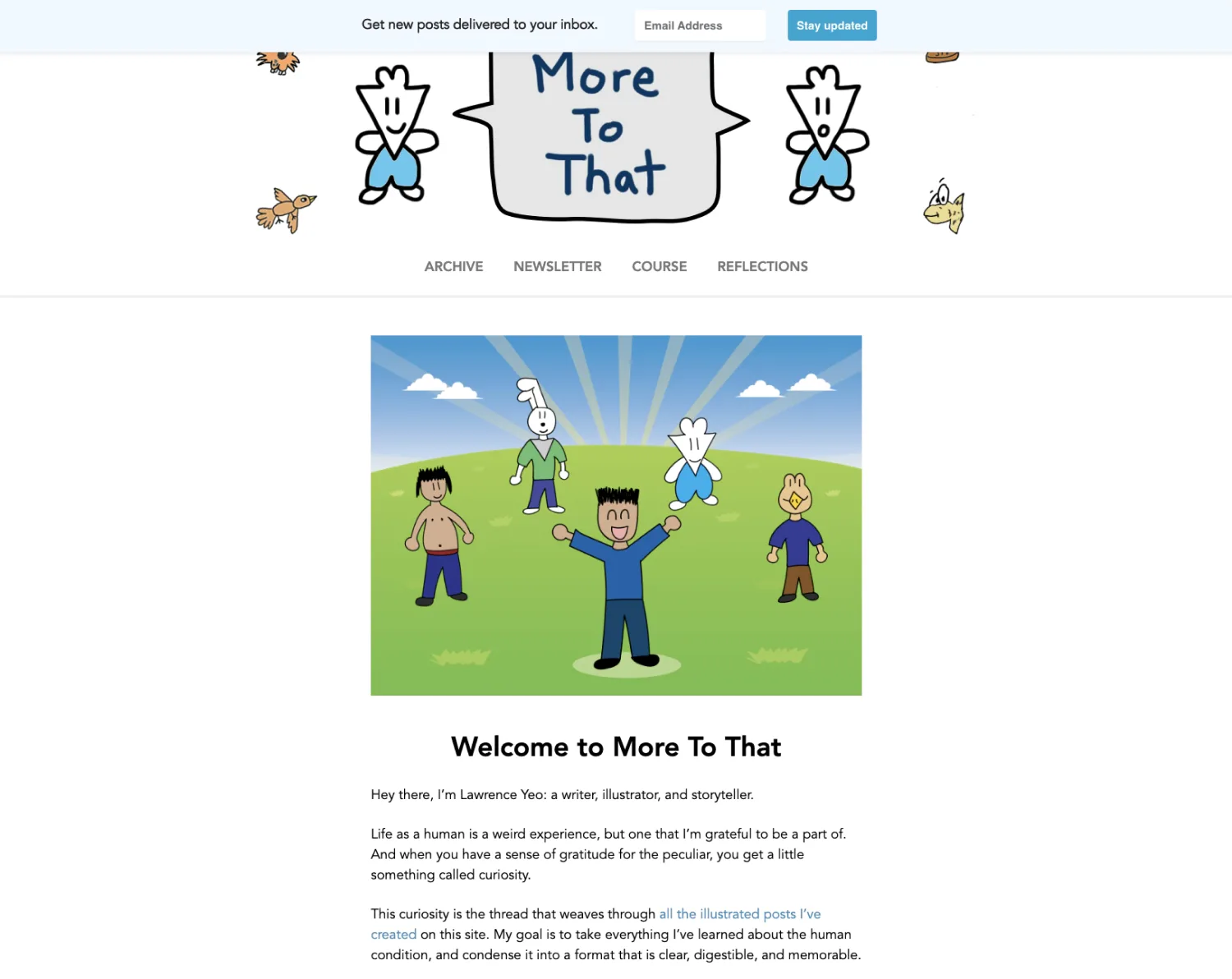
“Do I feel like the challenge is worthwhile?”
Between writing and illustrating, Lawrence spent over 100 hours on his first long-form post on More To That in March 2018. He didn’t know if anyone would read it, and spending that much time creating outside of his day job was a struggle, but he didn’t frame it as a struggle.
Creativity is a loaded word. We think creativity equals good, right? But it depends if it’s aligned with what version of struggle you find worthwhile.
There’s always a texture of struggle. There’s always gonna be a texture of challenge. But the punchline is, that’s the point.

Then, knowing he likely would not receive any views or external rewards for all this time spent, he asked himself a few important questions:
If that external validation piece truly is at zero, and I expect it to be, can I still spend all this time thinking about these stories and creating a website? Do I feel like the challenge is worthwhile? And I realized the answer to that was yes.
His favorite part of the challenge was making sure his musings didn’t sound just like ramblings but instead told a clear and cohesive story.
I wanted to provide a fresh take. And I think that’s what stories are. Especially within philosophy or psychology: you’re not trying to introduce some new truth that no one has ever heard before. The answer is not as important as the framing of the question.
So you are trying to frame the problem you’re addressing in such a unique way that gets someone to care about it, and they come to the answer or the conclusion themselves. That’s what a great story does.
And, as it turned out, Lawrence was an excellent storyteller, a skill that would turn his blog into a thriving business just a few years after it started.

“All I was hoping for was that this would be a creative outlet for me and that I could share with my friends.”
Lawrence’s stories spread through traction from Medium and word of mouth, much to his surprise.
All I was hoping for was that this would be a creative outlet for me and that I could share it with my friends.
After creating his first More To That piece, he emailed it to 21 of his friends, saying, “Hey, this is something I’ve been working on.” And that was that.

Or so he thought.
The piece resonated, and he kept making more, telling and illustrating more stories, and reframing more problems.
It was fun and became an important creative outlet for him.
Then, a year later, he and his wife decided to quit their jobs and move to Korea for six months to spend time with Lawrence’s parents. Their jobs at the time weren’t remote nor offered the flexibility to travel, so the only way they could see spending that quality time with his parents was to quit their jobs, live off their savings for six months, and then figure out what was next.
With all that new free time, Lawrence worked on More To That even more.
The momentum led to him starting a Patreon, and between that and the traffic he was getting via Medium, he started making some money. Not a lot, but enough to make him wonder if this might be more than just a creative outlet.
That wonder turned into curiosity, and that curiosity turned into a course. A storytelling course, to be exact.

“I’m gonna give myself time to be a creator.”
Lawrence sold his course using his email list, which was bigger than his social media following, which isn’t typical. Social media is usually where casual followers congregate, and from there, a portion of true fans gravitate toward the email list.
I have this interesting inverse dynamic where my email list is three to four times the size of my social media following.
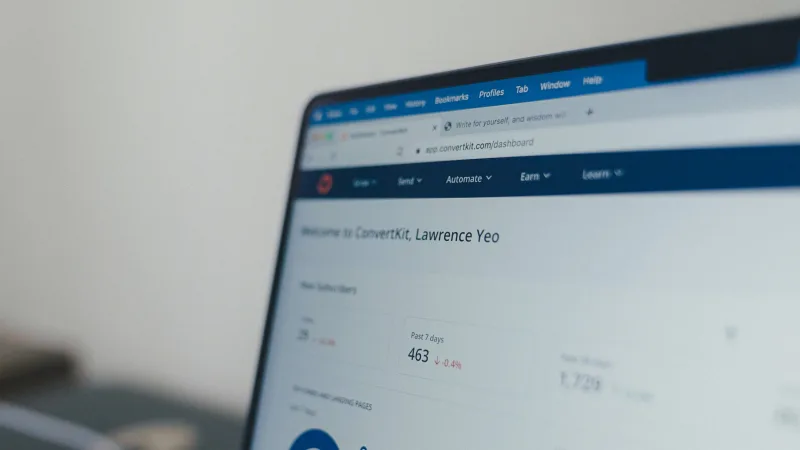
Social media wasn’t driving his views and engagement (he was not too active on social anyway). What was driving growth was the stories themselves. Something about them was inherently shareable, and his work spread by word of mouth.
But what makes a story that shareable and compelling?
It’s a combination of the storyteller creating from their own deepest interests, a knowledge of story structure, and creating something so high-quality and helpful that it elicits an emotional reaction in the reader that makes them want to pass that same experience on to someone else.
Lawrence wasn’t trying to mastermind maximum shareability, though. By creating something he truly cared about, it turned out he had a natural sense of how to create shareable stories and a lot of other people wanted his help on how they could tell better stories in their own craft and work.
That’s when he created his course, Thinking In Stories, to help other creatives discover their best stories and how to tell them.
I’m not gonna teach you how to build a following because I don’t even know if I’m very good at that, which is why I don’t put too much energy into social media right now. Maybe that may change, but I don’t have the answers to that.
But what I think I can show you is if you have an idea that you think is very compelling and you don’t want it to just be a tweet or you know you don’t want to just spend 30 minutes on it and let it out, but you want to really sit with it, and you want to find a thread that weaves through it in the form of a narrative, then I can help you.

His course doesn’t start with growth hacks or fool-proof templates but with giving creatives the time, space, and frameworks to delve deeper into who they really are as creators and storytellers.
We start there, and then I give them the tools they can experiment with. Agency is my number one thing with my course. I’m not the guru that knows it all. I am just here to give you this sense of, ‘Hey, I’m gonna give myself time to be a creator.’ That’s the hardest part for a lot of people, saying that they are artists or they are creators.
So we start off with giving yourself permission to do that.
And then there are all the technical things I can show you.
Not only has the course sold well, but the testimonials read like someone talking about their Master’s of Fine Art program; people seem to get a lot out of this course, including a community and a deeper sense of who they are as a creator.
After a few successful course launches, Lawrence realized he didn’t have to get another corporate job after all.
He used to think he’d need his next creative venture to match or exceed his corporate salaries to be worthwhile, but More To That changed his perspective.
My mindset has changed; I don’t need to compare it to the salary I was making because I’m fundamentally doing something very different here.
I have a piece called Money is the Megaphone of Identity where I talk about when you’re doing something fulfilling, your “enough” threshold decreases a lot of the time because you have this surplus in fulfillment, and that makes up for the difference.
My “enough” threshold for how much I need to make went a lot lower.
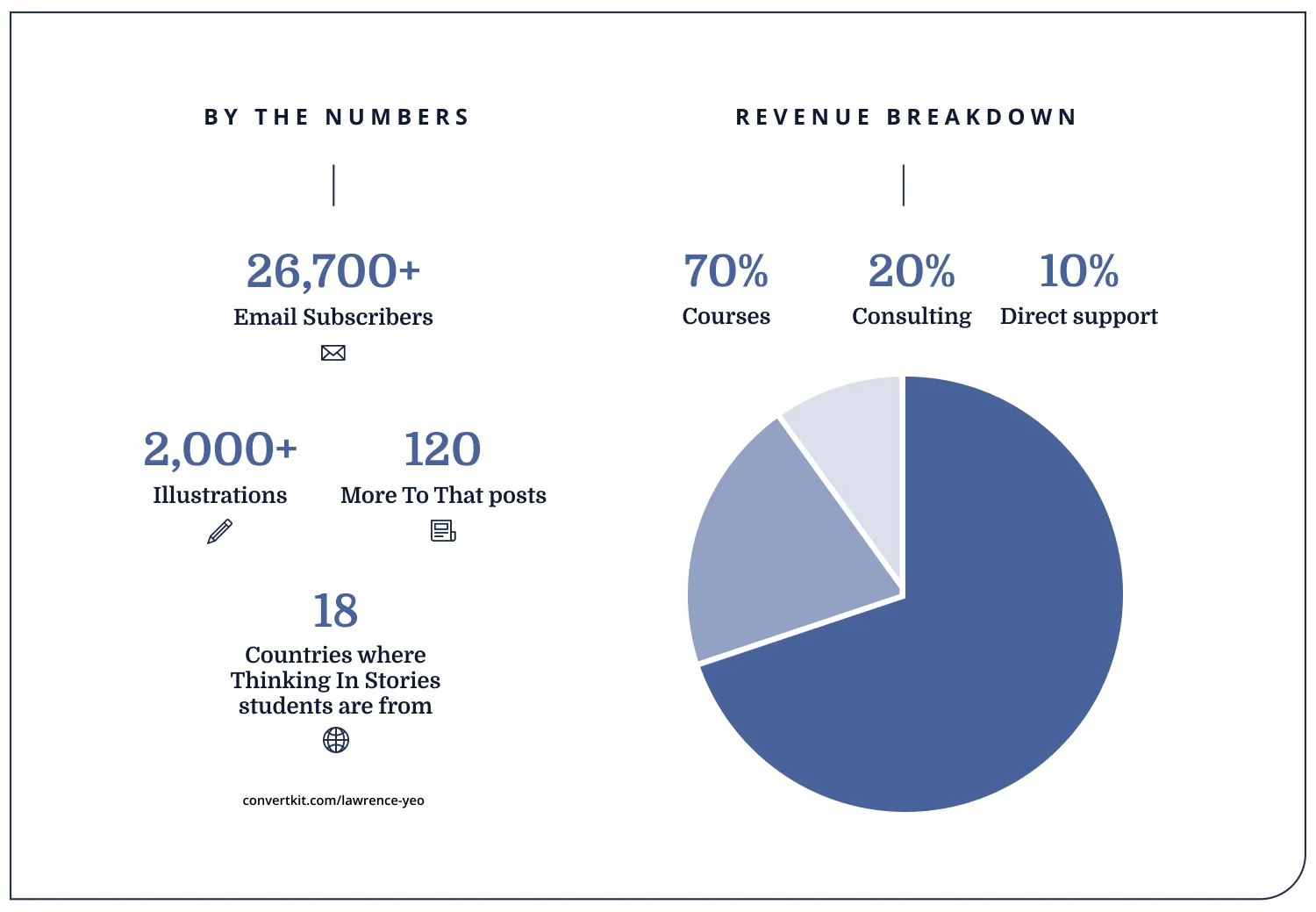
“If you feel like you’re making progress as a human being through your art, you’re an artist.”
Lawrence switched to Kit in January 2022, the same month he officially started his business.
It was a nice little like, Hey, I’m gonna get serious about the business side of things.
His friend Khe told him about Kit early on, but at that time, Lawrence was using another email service provider to simply send out his posts to his list. He didn’t see the need for more creator tools like automated emails or tags.
But when he got the idea for his course and knew he wanted to do live cohorts and would need a way to run a waiting list and create automated emails, he decided to make the switch.
Kit thinks about this for people like me and Khe, and it just became very apparent to me that Kit has creators in mind.
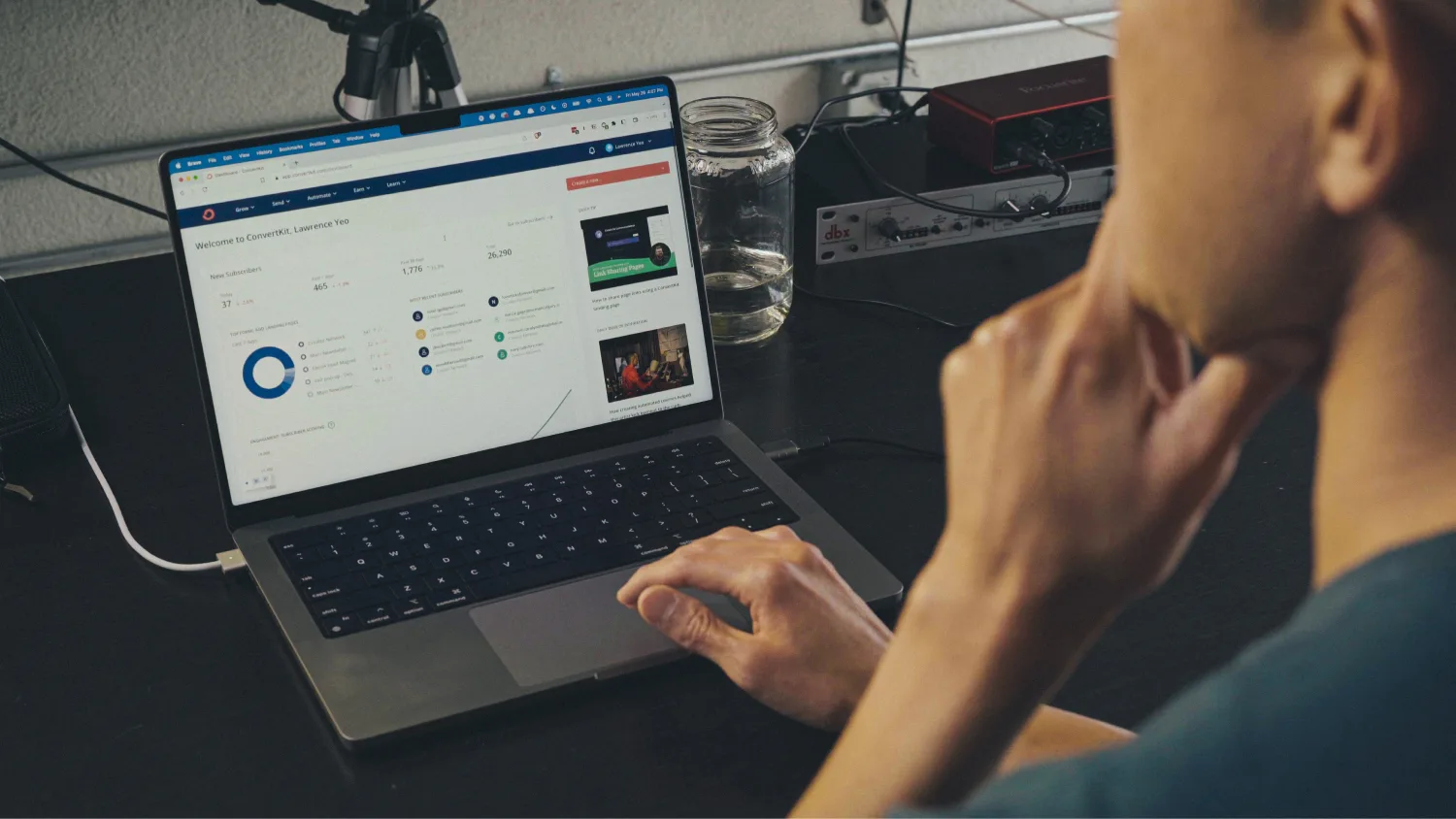
By the time he switched to Kit, he had 15,000 subscribers who’d joined from reading his posts. But once he launched his course to that list, he realized the next phase, especially if this was going to be a business, was finding out how he could grow.
The challenge of anyone managing an email newsletter well is how do you get this thing to grow?
And I think the second thing is also just churn. With every broadcast you send, especially as your email list gets larger, more and more people unsubscribe. It’s just part of the game.
Lawrence goes on to say he’s okay with the unsubscribes, though. He wants people to unsubscribe when they are no longer interested. His frame on unsubscribes is that it’s healthy and a good thing. However, it also presents the challenge of finding new subscribers on some kind of regular basis to keep the business going. Especially because the nature of email is that the more often you send emails, the more unsubscribes you get.
And while Lawrence knows this is normal and tries to keep the right frame on it, it still sometimes gets to him.
You start questioning, should I send this out weekly? Is my strategy all wrong? How do I refill this? Like, am I going in the wrong direction? I’m putting out stuff, but more and more people are leaving. So I think this is a recurring struggle for many creators, especially those who have promised their audience a cadence.
The cadence, he knows, isn’t the problem. Because for every unsubscribe, there are still way more people who stay on his list and want to hear from him on a regular basis. But when you’re a creator, there is a need to keep refilling that bucket since it’s natural and normal for it to go down sometimes.
I think social media is probably the best refiller to get people onto the list. But I’m continuously navigating my relationship with social media to see if I wanna jump into it or not.
But since Lawrence joined Kit, he’s gained 10,000+ new subscribers, with 2,000+ of those subscribers coming just in the last few months through Kit’s Creator Network.
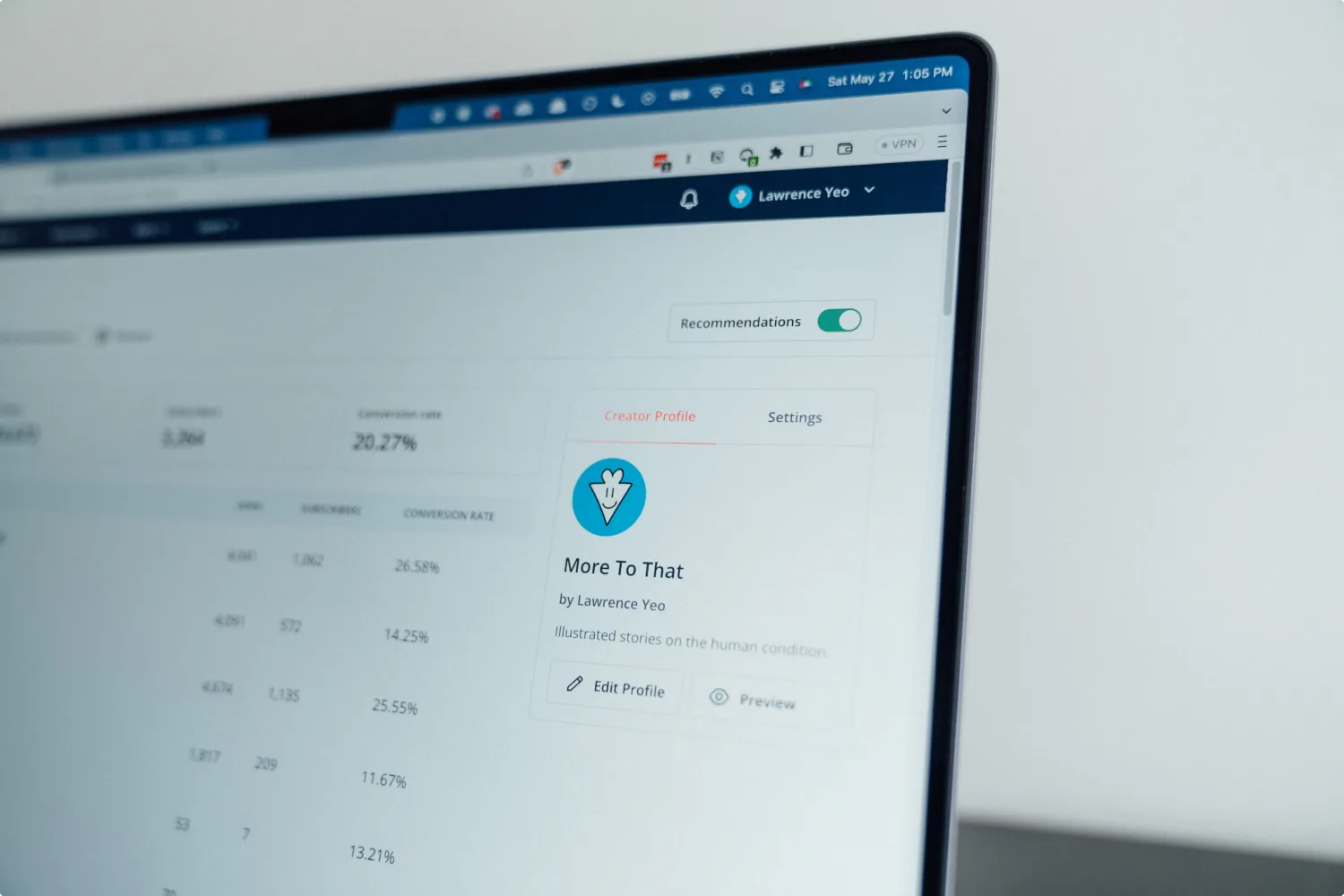
Early in his creator journey, Lawrence says he’d try to grow his list by doing newsletter swaps with other creators but finding partners was time-consuming, and reaching out felt awkward.
The Creator Network removes some of that social friction. It just feels like, okay, I just recommend you, and that’s it. You don’t have to ask each other for swaps.
But for Lawrence, this list growth and business growth means more people around the campfire, and that is his dream come true.
He’s also found a deeper sense of his identity as an artist, something he struggled to find in music.
Even if other people don’t care, if you feel like you’re making progress as a human being through your art, you’re an artist.

It took Lawrence a while to accept that artist identity for himself, but when he did, he says, it unlocked a lot of benefits.
It gives you a healthier relationship with uncertainty.
I’m an artist, I’m a creator, which means that whatever happens, I’ll find creative ways to figure it out.
That’s actually the biggest asset you could have as a creator, to be grateful for uncertainty. And isn’t that what curiosity is?

